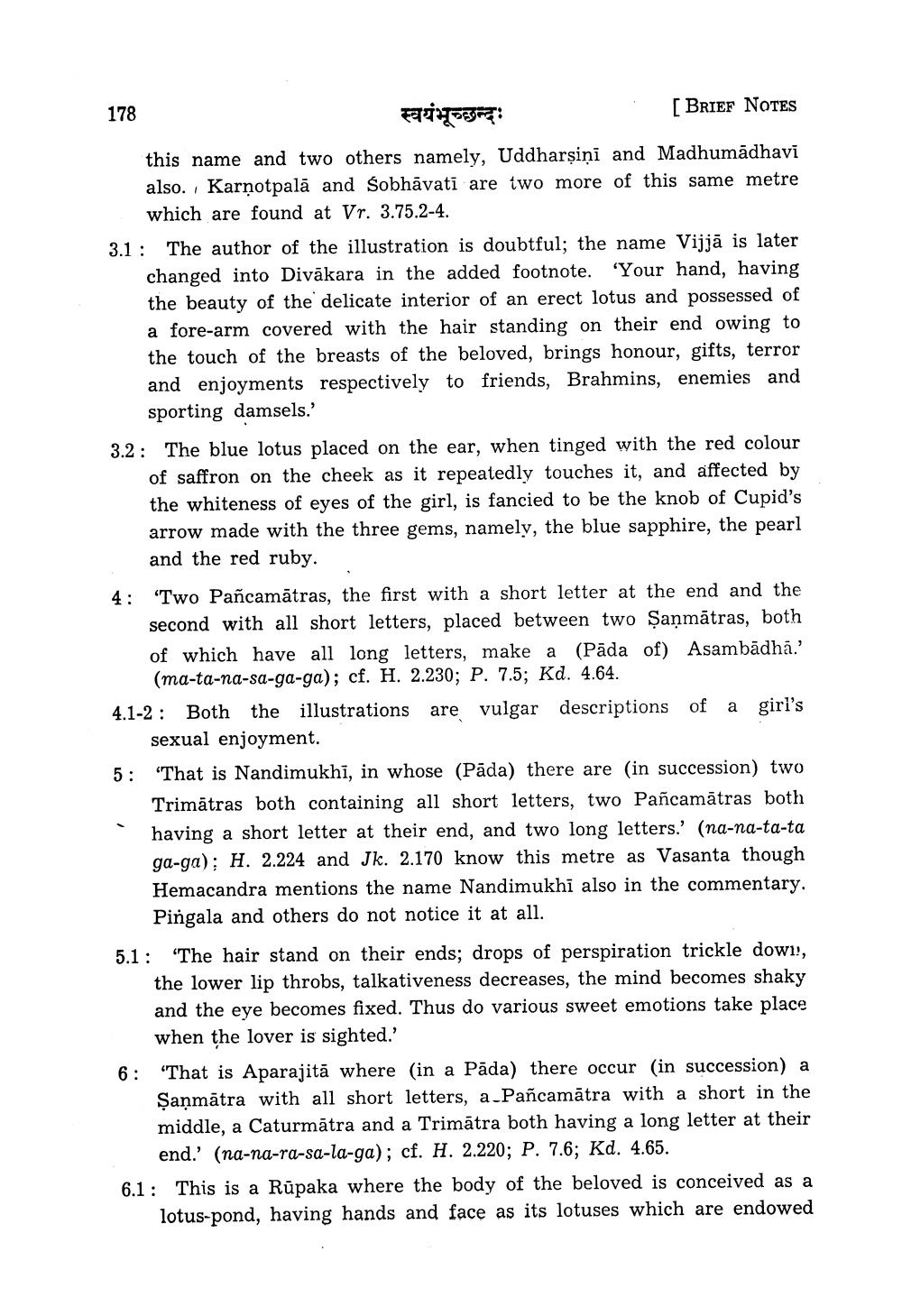________________
178
स्वयंभूच्छन्दः
[BRIEF NOTES
this name and two others namely, Uddharşiņi and Madhumādhavi also. Karņotpalā and Sobhāvati are two more of this same metre
which are found at Vr. 3.75.2-4. 3.1 : The author of the illustration is doubtful; the name Vijjā is later
changed into Divākara in the added footnote. 'Your hand, having the beauty of the delicate interior of an erect lotus and possessed of a fore-arm covered with the hair standing on their end owing to the touch of the breasts of the beloved, brings honour, gifts, terror and enjoyments respectively to friends, Brahmins, enemies and
sporting damsels.' 3.2: The blue lotus placed on the ear, when tinged with the red colour
of saffron on the cheek as it repeatedly touches it, and affected by the whiteness of eyes of the girl, is fancied to be the knob of Cupid's arrow made with the three gems, namely, the blue sapphire, the pearl
and the red ruby. 4: "Two Pañcamātras, the first with a short letter at the end and the
second with all short letters, placed between two Şaņmātras, both of which have all long letters, make a (Pāda of) Asambādhā.'
(ma-ta-na-sa-ga-ga); cf. H. 2.230; P. 7.5; Kd. 4.64. 4.1-2 : Both the illustrations are vulgar descriptions of a girl's
sexual enjoyment. 5: “That is Nandimukhī, in whose (Pāda) there are in succession) two
Trimātras both containing all short letters, two Pañcamātras both having a short letter at their end, and two long letters.' (na-na-ta-ta ga-ga); H. 2.224 and Jk. 2.170 know this metre as Vasanta though Hemacandra mentions the name Nandimukhi also in the commentary. Pingala and others do not notice it at all.
5.1: "The hair stand on their ends; drops of perspiration trickle dowi!,
the lower lip throbs, talkativeness decreases, the mind becomes shaky and the eye becomes fixed. Thus do various sweet emotions take place
when the lover is sighted.' 6: “That is Aparajitā where (in a Pāda) there occur in succession) a
Şaņmātra with all short letters, a Pañcamātra with a short in the middle, a Caturmātra and a Trimātra both having a long letter at their
end.' (na-na-ra-sa-la-ga); cf. H. 2.220; P. 7.6; Kd. 4.65. 6.1: This is a Rūpaka where the body of the beloved is conceived as a
lotus-pond, having hands and face as its lotuses which are endowed




